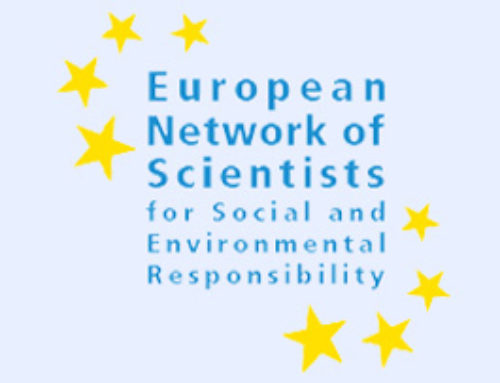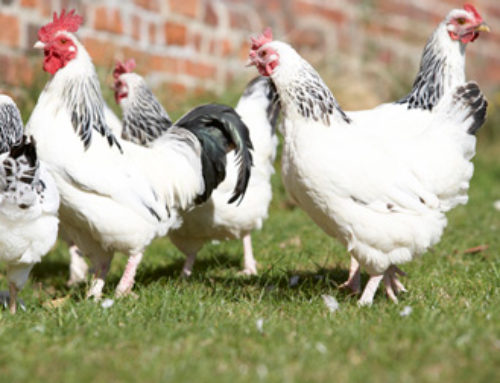 Earth Open Source press release 17 June 2012
Earth Open Source press release 17 June 2012
Aren’t critics of genetically engineered food anti-science? Isn’t the debate over GMOs (genetically modified organisms) a spat between emotional but ignorant activists on one hand and rational GM-supporting scientists on the other?
A new report released today, “GMO Myths and Truths”,
Unusually, the initiative for the report came not from campaigners but from two genetic engineers who believe there are good scientific reasons to be wary of GM foods and crops.

One of the report’s authors, Dr Michael Antoniou of King’s College London School of Medicine in the UK, uses genetic engineering for medical applications but warns against its use in developing crops for human food and animal feed.
Dr Antoniou said: “GM crops are promoted on the basis of ambitious claims – that they are safe to eat, environmentally beneficial, increase yields, reduce reliance on pesticides, and can help solve world hunger.
“I felt what was needed was a collation of the evidence that addresses the technology from a scientific point of view.
“Research studies show that genetically modified crops have harmful effects on laboratory animals in feeding trials and on the environment during cultivation. They have increased the use of pesticides and have failed to increase yields. Our report concludes that there are safer and more effective alternatives to meeting the world’s food needs.”

Another author of the report, Dr John Fagan, is a former genetic engineer who in 1994 returned to the National Institutes of Health $614,000 in grant money due to concerns about the safety and ethics of the technology. He subsequently founded a GMO testing company.
Dr Fagan said: “Crop genetic engineering as practiced today is a crude, imprecise, and outmoded technology. It can create unexpected toxins or allergens in foods and affect their nutritional value. Recent advances point to better ways of using our knowledge of genomics to improve food crops, that do not involve GM.
“Over 75% of all GM crops are engineered to tolerate being sprayed with herbicide. This has led to the spread of herbicide-resistant superweeds and has resulted in massively increased exposure of farmers and communities to these toxic chemicals. Epidemiological studies suggest a link between herbicide use and birth defects and cancer.

“These findings fundamentally challenge the utility and safety of GM crops, but the biotech industry uses its influence to block research by independent scientists and uses its powerful PR machine to discredit independent scientists whose findings challenge this approach.”
The third author of the report, Claire Robinson, research director of Earth Open Source, said, “The GM industry is trying to change our food supply in far-reaching and potentially dangerous ways. We all need to inform ourselves about what is going on and ensure that we – not biotechnology companies – keep control of our food system and crop seeds.
“We hope our report will contribute to a broader understanding of GM crops and the sustainable alternatives that are already working successfully for farmers and communities.”
Notes
The report, “GMO Myths and Truths, An evidence-based examination of the claims made for the safety and efficacy of genetically modified crops”, by Michael Antoniou, PhD, Claire Robinson, and John Fagan, PhD is published by Earth Open Source (June 2012). The report is 123 pages long and contains over 600 citations, many of them from the peer-reviewed scientific literature and the rest from reports by scientists, physicians, government bodies, industry, and the media. The report is available here: http://earthopensource.org/index.php/reports/58
A shorter summary version will be released in the coming weeks.
Key points from the report
- Genetic engineering as used in crop development is not precise or predictable and has not been shown to be safe. The technique can result in the unexpected production of toxins or allergens in food that are unlikely to be spotted in current regulatory checks.
- GM crops, including some that are already in our food and animal feed supply, have shown clear signs of toxicity in animal feeding trials – notably disturbances in liver and kidney function and immune responses.
- GM proponents have dismissed these statistically significant findings as “not biologically relevant/significant”, based on scientifically indefensible arguments.
- Certain EU-commissioned animal feeding trials with GM foods and crops are often claimed by GM proponents to show they are safe. In fact, examination of these studies shows significant differences between the GM-fed and control animals that give cause for concern.
- GM foods have not been properly tested in humans, but the few studies that have been carried out in humans give cause for concern.
- The US FDA does not require mandatory safety testing of GM crops, and does not even assess the safety of GM crops but only “deregulates” them, based on assurances from biotech companies that they are “substantially equivalent” to their non-GM counterparts. This is like claiming that a cow with BSE is substantially equivalent to a cow that does not have BSE and is thus safe to eat! Claims of substantial equivalence cannot be justified on scientific grounds.
- The regulatory regime for GM foods is weakest in the US, where GM foods do not even have to be assessed for safety or labelled in the marketplace, but in most regions of the world regulations are inadequate to protect people’s health from the potential adverse effects of GM foods.
- In the EU, where the regulatory system is often claimed to be strict, minimal pre-market testing is required for a GMO and the tests are commissioned by the same companies that stand to profit from the GMO if it is approved – a clear conflict of interest.
- No long-term toxicological testing of GMOs on animals or testing on humans is required by any regulatory agency in the world.
- Biotech companies have used patent claims and intellectual property protection laws to restrict access of independent researchers to GM crops for research purposes. As a result, limited research has been conducted on GM foods and crops by scientists who are independent of the GM industry. Scientists whose work has raised concerns about the safety of GMOs have been attacked and discredited in orchestrated campaigns by GM crop promoters.
- Most GM crops (over 75%) are engineered to tolerate applications of herbicides. Where such GM crops have been adopted, they have led to massive increases in herbicide use.
- Roundup, the herbicide that over 50% of all GM crops are engineered to tolerate, is not safe or benign as has been claimed but has been found to cause malformations (birth defects), reproductive problems, DNA damage, and cancer in test animals. Human epidemiological studies have found an association between Roundup exposure and miscarriage, birth defects, neurological development problems, DNA damage, and certain types of cancer.
- A public health crisis has erupted in GM soy-producing regions of South America, where people exposed to spraying with Roundup and other agrochemicals sprayed on the crop report escalating rates of birth defects and cancer.
- A large number of studies indicate that Roundup is associated with increased crop diseases, especially infection with Fusarium, a fungus that causes wilt disease in soy and can have toxic effects on humans and livestock.
- Bt insecticidal GM crops do not sustainably reduce pesticide use but change the way in which pesticides are used: from sprayed on, to built in.
- Bt technology is proving unsustainable as pests evolve resistance to the toxin and secondary pest infestations are becoming common.
- GM proponents claim that the Bt toxin engineered into GM plants is safe because the natural form of Bt, long used as a spray by conventional and organic farmers, has a history of safe use. But the GM forms of Bt toxins are different from the natural forms and could have different toxic and allergenic effects.
- GM Bt toxin is not limited in its toxicity to insect pests. GM Bt crops have been found to have toxic effects on laboratory animals in feeding trials.
- GM Bt crops have been found to have toxic effects on non-target organisms in the environment.
- Bt toxin is not fully broken down in digestion and has been found circulating in the blood of pregnant women in Canada and in the blood supply to their foetuses.
- The no-till method of farming promoted with GM herbicide-tolerant crops, which avoids ploughing and uses herbicides to control weeds, is not more climate-friendly than ploughing. No-till fields do not store more carbon in the soil than ploughed fields when deeper levels of soil are measured.
- No-till increases the negative environmental impacts of soy cultivation, because of the herbicides used.
- Golden Rice, a beta-carotene-enriched rice, is promoted as a GM crop that could help malnourished people overcome vitamin A deficiency. But Golden Rice has not been tested for toxicological safety, has been plagued by basic development problems, and, after more than 12 years and millions of dollars of research funding, is still not ready for the market. Meanwhile, inexpensive and effective solutions to vitamin A deficiency are available but under-used due to lack of funding.
- GM crops are often promoted as a “vital tool in the toolbox” to feed the world’s growing population, but many experts question the contribution they could make, as they do not offer higher yields or cope better with drought than non-GM crops. Most GM crops are engineered to tolerate herbicides or to contain a pesticide – traits that are irrelevant to feeding the hungry.
- High adoption of GM crops among farmers is not a sign that the GM crop is superior to non-GM varieties, as once GM companies gain control of the seed market, they withdraw non-GM seed varieties from the market. The notion of “farmer choice” does not apply in this situation.
- GM contamination of non-GM and organic crops has resulted in massive financial losses by the food and feed industry, involving product recalls, lawsuits, and lost markets.
- When many people read about high-yielding, pest- and disease-resistant, drought-tolerant, and nutritionally improved super-crops, they think of GM. In fact, these are all products of conventional breeding, which continues to outstrip GM in producing such crops. The report contains a long list of these conventional crop breeding successes.
- Certain “supercrops” have been claimed to be GM successes when in fact they are products of conventional breeding, in some cases assisted by the non-GM biotechnology of marker assisted selection.
- Conventional plant breeding, with the help of non-GM biotechnologies such as marker assisted selection, is a safer and more powerful method than GM to produce new crop varieties required to meet current and future needs of food production, especially in the face of rapid climate change.
- Conventionally bred, locally adapted crops, used in combination with agroecological farming practices, offer a proven, sustainable approach to ensuring global food security.
About the authors
Michael Antoniou, PhD is reader in molecular genetics and head, Gene Expression and Therapy Group, King’s College London School of Medicine, London, UK. He has 28 years’ experience in the use of genetic engineering technology investigating gene organisation and control, with over 40 peer reviewed publications of original work, and holds inventor status on a number of gene expression biotechnology patents. Dr Antoniou has a large network of collaborators in industry and academia who are making use of his discoveries in gene control mechanisms for the production of research, diagnostic and therapeutic products and human somatic gene therapies for inherited and acquired genetic disorders.
John Fagan, PhD is a leading authority on sustainability in the food system, biosafety, and GMO testing. He is founder and chief scientific officer of a GMO testing and certification company. He is a director of Earth Open Source. Earlier, he conducted cancer research at the US National Institutes of Health (NIH) and in academia. He holds a PhD in biochemistry and molecular and cell biology from Cornell University.
Dr Fagan became an early voice in the scientific debate on genetic engineering when in 1994 he took an ethical stand challenging the use of germline gene therapy (which has subsequently been banned in most countries) and genetic engineering in agriculture. He underlined his concerns by returning a grant of around $614,000 to the US National Institutes of Health, awarded for cancer research that used genetic engineering as a research tool. He was concerned that knowledge generated in his research could potentially be misused to advance human germline genetic engineering (for example, to create “designer babies”), which he found unacceptable on grounds of both safety and ethics. For similar reasons, around the same time, he withdrew applications for two additional grants totalling $1.25 million from the NIH and the National Institute of Environmental Health Sciences (NIEHS). In 1996 he founded one of the pioneering GMO testing and certification companies after realising that this could be useful to assist industry in providing consumers with the transparency that they desired regarding the presence of GMOs in foods.
Claire Robinson, MPhil is research director at Earth Open Source. She has a background in investigative reporting and the communication of topics relating to public health, science and policy, and the environment. She is an editor at GMWatch (www.gmwatch.org), a public information service on issues relating to genetic modification, and was formerly managing editor at SpinProfiles (now Powerbase).





Thank you for such a well referenced, informative, easy to read and generally all round excellent resource. This report needs to be distributed globally. Having worked on this issue for Greenpeace USA in 2000 we predicted much of what has become a referenced fact. Our interviews with farmers ‘ Grains of Truth’ http://www.youtube.com/watch?v=RESbNJp3kfc was our way of showing back then that farmers in Canada and the USA were not rampant fans of this new technology. Best of luck with getting the word out. And let’s all hope the California ballot initiative to label GMO ingredients (a first in North America if it were to happen) gets loads more support.
Very interesting and informative. This has to be communicated to citizens at large. Unfortunately, populations at large are completely uninformed about this issue and corporations have the upper hand.
I agree…these findings should be made known to the four corners of the globe. I’m posting this to my facebook account.
Thank you for this deep scientific explanation, the evidence and the sequence of the information make it very clear about the dangerous facts around the subject.
I believe personally for the raised points in this article, as agriculture expert with long research about inducing the natural genes inside the plant genotype to produce and express its content.
The most dangerous issue now that all of us are affected by plant genetically modifying direct or indirect way, as example huge amount of soya beans and corns in the international market is genetically engineered
The Vegetable we eat it could be also genetically modified without knowing, as most the imported regulation is hardly to find that.
My hope that we can spread the information we got here for the public and the decision makers
Thanks for the info. I wish there were no GMO in ALL the food, they should keep everything natural like it should be.
that is really informative.thank you.
Thank you for being a part of the solution to this world-threatening problem. Is there any way that a farmer can easily tell the difference between a genetically modified seed and a normal seed? I was thinking about beans. They are seeds that spring up in a few days if soaked overnight. So, if they don’t come up, they should be regarded as being genetically modified. Also, there are foods like sprouts, poppy seeds, and other seeds that are not genetically modified and are good sources of nutrition. There are also ducks, quail, and rabbit as well as other wild game. I am going to make it a new year’s resolution to buy a few ducklings, chicks and other non-contaminated sources of protein, Perhaps some enterprising person could market a product that will identify genetically modified foodstuffs. I keep asking the question…..What is my potential now? I am half human and half Monsanto cow. Cow diseases are now turning up in humans. It is humans that are now becoming genetically modified, and they are mixing us with animals that that meant to be consumed, like cows and pigs. I am now finger- licking good! I think I will found the Brotherhood of the Barnyard! Lord love a duck!
Candy, there are companies that will do GM testing for you to see if seed is GM. For the most part, the seeds that are at risk of being GM are soy, maize, canola and cotton. Also sugar beet and alfalfa in the US. It is not possible to tell if a seed is GM just from whether or when the seed sprouts. It is possible technically to grow a plant from a GM seed, it’s just that Monsanto can sue you if they find out because the genes are their patented technology.
Its total waste of funds, shown no benefit. I support it only when beneficial genes from the same crops are used, but with a technology that doesnt need any marker type genes it……n its impossible……..
Wait what happen next in this dangerous topic…
Thanks to bring up this truly valueable information hopefully more people will get aware of it.
I really like this and i hope an A on my project from your information.
my worry is for a local farmer deep down in the village with no access to information especially on GMOs, the extension workers who are linked to them, cannot defend the farmer because they lack independence, they are paid to do work other than standing for the safety of our world. women are caring most of the consequent burdens of health problems as a result. lets have community access this information, build their capacity and empower the in participation and making decision in proper agronomic practices.
thanks
If this reports and reviews scientifically derived information then why isn’t it being published in a peer-reviewed science journal and not on the net? Likely because it would never be able to face an objective review. If people are so worried about what they put into their bodies, why are they so lazy about what they put into their minds?
@Sue Rose: Many of the studies summarised in the report were published in peer-reviewed journals. This report simply collects them together for the public’s convenience. We are not saying anything new; we just point to the evidence that is there for all to see.
I have small farm of 13 acres which is mostly blackberry bushes. I purchased meat goats (kikos) . They are a wonderful source of meat that naturally love my blackberry bushes and most everything cows and sheep won’t eat or are not good for them. You can put them alongside cows and sheep with no difficulty. If meat (cows, chickens, sheep,etc) continues to be feed these products meat goats could be the answer for you. I’ve just began my small heard. But I am getting people coming by to buy my goats with no adds. The sad part is my heard is too small yet to be selling them for meat. However for anyone interested in Oregon look-up Kiko@lookoutpointranch.com they sell meat goats. And best all I forgot to add kiko meat goats do not need to be fed anything that’s in a feed store. They do well on marginal land without shots/wormings etc. Hope this helps some of you who did not want to eat meat with all the junk. For me I just wish I had five hundred or more acres of blackberry bushed land to start a good place for people to buy safe meat.
thanks
thanks
I’d like to know how many of the people commenting actually read the whole 122 page report. And since this just a compilation of journals that support your claims, how easy would it be for someone to compile the complete opposite, a collection of journal articles that oppose your claims? The problem here is most people that read this site aren’t going to have access to the original journals so they can’t actually read the research themselves.
erthwjim, you are quite right; there are plenty of papers, eg those authored by the PR firm Brookes and Barfoot, which argue that GMOs are wonderful. But I am not concerned that these papers will be ignored, given the massive PR dollars of the GM industry. Our job is to point out the evidence that shows risks of GMOs, which has been shoved under the carpet and not addressed.
Availability of scientific research is an issue but some of the reports and articles we cite are freely available. In some cases we have applied to the authors for copies of their papers, and almost always received them. Naturally the abstracts are publicly available. We look forward to the day when all papers are universally available.
The huge majority of scientific studies on the safety of GMO plants shows no effects compared to the untransformed plant. These studies never make it to the news or the internet because they are boring. One extremely biased study, for instance Seraliani et al comes out and the anti-GMO movement goes into a frenzy. The responses to this study are never publicized. The fact content of the anti-GMO movement is low and the emotionalism is fever-pitch high. We need a science-based regulation for new technology. Reading the abstract is not good enough. If you don’t have the information or an understanding, not derived from googling, then maybe you should be conservative about what you say. I have a PhD in Plant Science from a Canadian University.
Violet, I am not sure who the target of your complaints is. Perhaps you could be more precise. We have read the complete papers on which we comment in Myths and Truths; but we are aware that not everyone can get hold of them.
In M&T we note that there are comprehensive reviews on the food safety studies on GMOs. The findings are clear: the studies that conclude safety are more likely to be conducted by the GM companies or affiliates; those finding risk are likely to be conducted by independent researchers.
But I am curious as to the thinking of people who answer the safety question by pointing out that some papers show safety of the GMO in question. What exactly are you saying? That 50% of papers claim the GMO tested is safe, and that therefore 50% of all GMOs are safe, or that all GMOs are safe 50% of the time? Why would these people not prefer to use their scientific knowledge in finding out why the GMOs that have been found more toxic than their non-GM equivalent, are more toxic? That way, they could create safer GMOs.
Sadly a PhD in plant science does not seem to teach people much about toxicology or human and animal health.
Incidentally, Violet’s claim, “The huge majority of scientific studies on the safety of GMO plants shows [sic] no effects compared to the untransformed plant.” is incorrect. Look closely at many papers, even Monsanto’s own papers, on GMO safety and it’s surprising how many differences and signs of toxicity you find. Often, however, the industry authors claim the differences don’t matter. Seralini’s ‘fault’ was that he tested this claim, that the differences are not important, and found that actually they were.
[…] This is a great story about how some genetic researchers are the ones sounding the alarm about the dangers of genetically modified crops. Your only definitive recourse against eating genetically modified food is to always look for the organic label. GMO ingredients are not allowed in foods that are organically certified. If you really care about your health and the well being of the planet, check out the Organic Consumer’s Association and subscribe to their news letters so you can make sure you’ll always have good clean sources of healthy food. […]